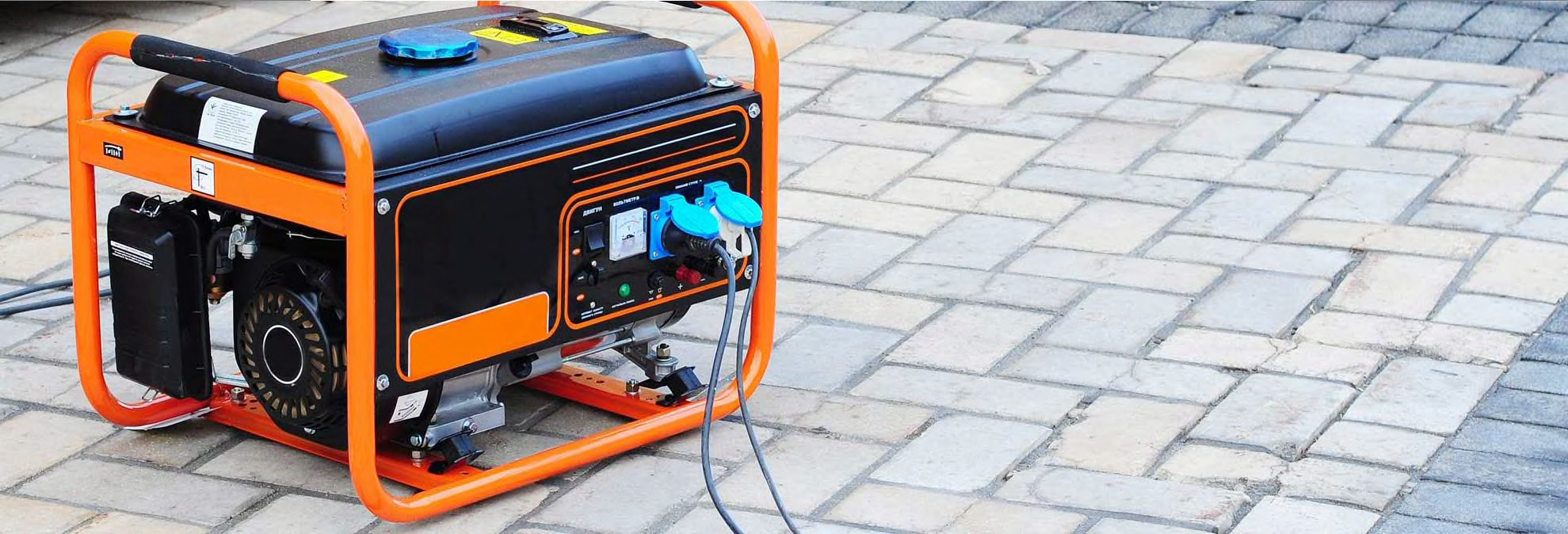
Generator Buying Guide

Senior Home & Tech Writer
During a power outage, a generator can keep all your necessities running—from the lights, appliances, and heating systems to your air conditioning, sump pumps, and WiFi. It can also help you save money by keeping your food from spoiling and your basement from flooding. For people with electrically powered medical devices, buying a generator can be a lifesaver.
As more and longer power outages happen across the country, a generator is becoming an important layer of protection. According to the U.S. Energy Information Administration, U.S. consumers experienced approximately 5½ hours of electricity interruptions in 2022, the most recent year for which data is available. That’s down from more than 8 hours in 2020 but up from 3 hours in 2013. Hurricanes, ice storms, and other large-scale weather emergencies are largely to blame, as are smaller, more localized storms that bring down trees and power lines.
While a generator can keep you afloat during severe weather, it can pose dangers if you don’t take precautions and set up your generator ahead of any storms. Working by flashlight (or in a rush), you might skip over critical safety steps while connecting a generator to appliances or the electrical panel in your home.
To keep yourself safe, always use your generator outside, at least 20 feet from your home, with the exhaust directed away from the house. Before you fire up a generator, make sure your residence has working carbon monoxide detectors, which could further prevent carbon monoxide (CO) poisoning.
How CR Tests Generators
To test generators for performance, our expert engineers load each model with various essentials you might want to power during an outage, like a space heater, refrigerator, or window air conditioner. We make sure the generator can handle the load it promises and also see what happens when a sudden spike in voltage hits, like if the compressor in your refrigerator kicked on when the generator was already close to capacity. The best models take that in stride, while others bog down or even quit. A generator with a high output that struggles with power delivery or quality might stall or trip a circuit when it’s bogged down.
We also consider how easy it is to move and use a generator, how efficiently it uses gasoline or other fuel, and how long it runs on a single tank.
To test for safety, we run each generator through a variety of scenarios designed to capture the ways in which a consumer might inadvertently misuse it. Our custom-built test chamber is wired with calibrated carbon monoxide sensors, and we record CO levels throughout the container when a generator is on, noting how quickly each generator turns off when the levels become potentially dangerous.
Finally, to reduce the risk of carbon monoxide poisoning, many portable generators feature a built-in sensor that triggers an automatic shutoff if CO builds up to dangerous levels in an enclosed space. Some also have engines that emit less CO in the first place.
Test data from CR shows that this safety feature is likely to save lives, and we’ll only recommend portable generators that pass our expanded CO safety technology test.
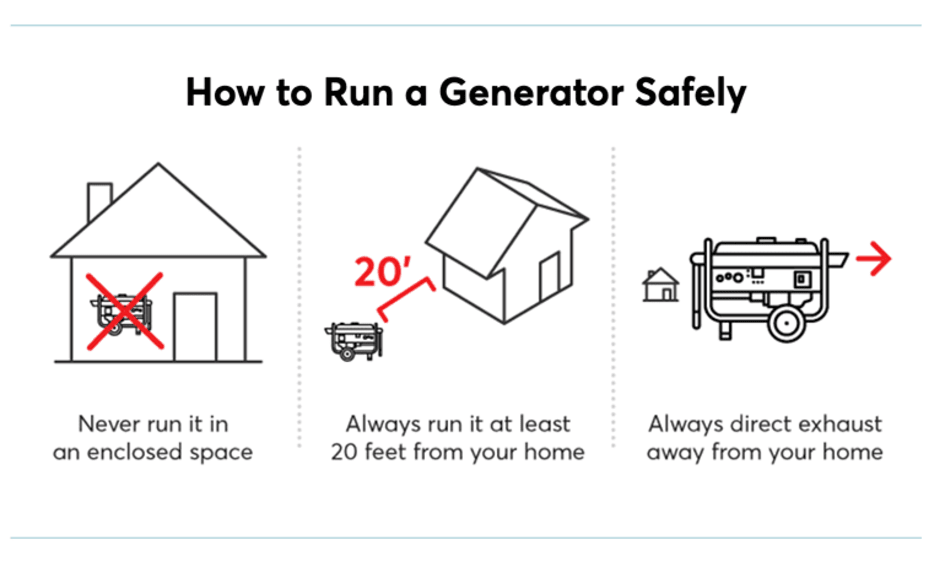
Illustration: Consumer Reports Illustration: Consumer Reports
How Do I Calculate What Size Generator I Need?
Choosing the right home generator means figuring out what size generator you need first. Generators are sold by power output, measured in watts. The amount of power a generator delivers determines how many electronics and appliances you can run at once. A typical home would need around 5,000 watts.
Before you look through our generator ratings for the best generator for your home, make a list of the devices you’ll need when the power’s out. Then add up wattages to get you in the right ballpark.
Here are some rough wattage estimates for common essentials as you build out your list:
- Refrigerator: 600 watts
- Sump pump: 750 to 1,500 watts
- Portable heater: 1,500 watts
- Window air conditioner: 1,000 watts
- Lights: 5 to 80 watts (per bulb)
- Computer: 60 to 300 watts
Types of Generators
When buying a generator, you have four options to consider: Home standby generators, portable generators, inverter generators, and portable power stations.
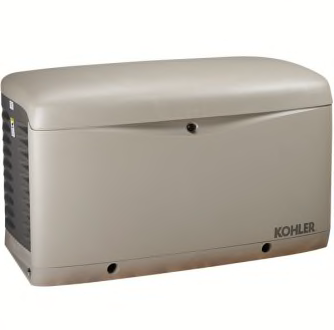
Home Standby Generators
Home standby generators, or whole-house generators, are installed permanently on your property. They can run on natural gas or propane and kick in automatically during an outage.
• They are by far the most expensive and should be installed by an experienced electrician who can help with town or municipal permits, noise restrictions, and proper location. Installation usually costs more than the generator itself—sometimes several times more.
• Home standby generators start automatically when the power goes out, and they typically supply more power than the other three options.
• Many units turn on automatically for a few minutes every day so that you know they’re ready to run when there’s an outage. They also run a self-diagnosis to let you know when maintenance is needed. Some even alert you or your dealer via email or text.
• You have your choice of fuel—propane, which is less risky to store than the gasoline required for other models here, or natural gas, which provides an unlimited supply of power.
Typical power output:
Roughly 5,000 to 20,000 watts, but because there’s little difference in the installation costs between a smaller unit and a larger one, it makes sense to get one that can easily power your home both now and in the future.
Typical cost:
$2,000 to $7,000 without installation, which can more than double these prices.
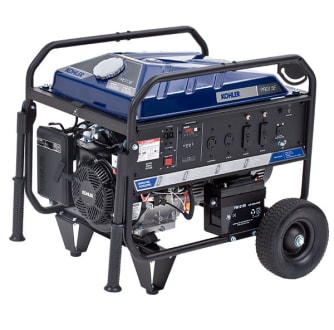
Portable Generators
Portable generators can be moved around. Some are smaller for transporting to a tailgate, while others are better kept on your property as a backup power source.
• These units tend to cost less than home standby generators, and there’s no installation expense.
• Portable generators typically run on gasoline that you may need to store in large quantities. If you’re storing the unit for any length of time, you need to add a stabilizer to your gas to keep it from clogging the fuel system, which is why some units won’t start after sitting in your garage for months or longer.
• A few models run on both gasoline and liquid propane. Running a generator on propane has the added benefit of being cleaner, so fuel residue doesn’t clog up your generator’s carburetor.
• You can use portable generators anywhere on or off your property—but never in an enclosed space. Like a car engine, these models can quickly produce deadly levels of carbon monoxide. Always run a portable generator at least 20 feet from your home and equipment such as a central air conditioner condenser or a window AC, and direct the exhaust away from the house or any other structure, including your neighbors’ homes.
• If it’s raining, shield your generator with a canopy designed for your particular model.
• Some models offer electric starting. The battery required for electric start, however, might not be included.
Typical power output:
Models we test provide 3,000 to 8,500 watts.
Typical cost:
$400 to $3,000.
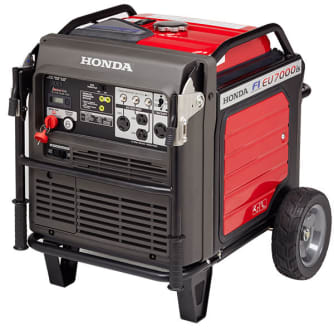
Inverter Generators
Like portable generators, inverter generators can be moved around. They’re much quieter because they throttle up and down to match demand rather than running at full power all the time. They also have more sophisticated exhaust systems that help tamp down noise. However, inverter generators generally cost more than portable generators with a comparable output.
• Inverter generators operate more efficiently, so you can get a much longer run time from the same amount of gasoline. They also produce fewer emissions than portable generators, but you should still follow the same safety precautions to prevent carbon monoxide poisoning.
• Sizes vary widely, from large inverter generators that can power an entire house, generating 5,000 watts (at 220 volts) and exceeding 250 pounds, to small versions that can be taken on a camping trip, weighing as little as 30 pounds.
Typical power output:
Models we test provide 900 to 7,600 watts.
Typical cost:
$400 to $5,000.
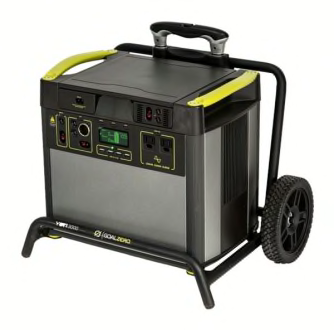
Portable Power Stations
Portable power stations are large, rechargeable batteries that store electricity for when you need it. They have limitations, but they are the only option for someone who lives in an apartment and cannot safely run a generator outdoors.
• A power station doesn’t use gas or propane. It’s powered by a battery that you charge by plugging the unit into an electrical outlet—or, sometimes, an included solar panel. (You might also see these called "solar generators," though they still work best when charged from an outlet.)
• As with a small inverter generator, a portable power station is best for cases in which you don’t need power for very long—say, a camping trip, tailgate, or bouncy house that needs inflating. The units don’t provide as much power as a portable generator and must be periodically recharged. They tend to be heavier and significantly more expensive, too.
• Because they have no engine, the devices are extremely quiet. They don’t produce fuel emissions or carbon monoxide, so you can use them indoors. And there are no problems with starting them because there’s nothing to start—think of them as a giant version of the battery pack you use to charge your cell phone on the go.
Typical power output:
Models we test provide 1,800 to 6,000 watts.
Typical cost:
$1,500 to $4,000.
Generator Features to Consider
Don’t let rain, snow, or wind keep you in the dark. Look for these options to get a generator that’s safe, reliable, and tailored to your power needs.
Automatic CO Shutoff
This critical safety feature automatically shuts down a generator’s engine if a built-in CO sensor detects that the deadly gas has reached certain levels. We have over a dozen generators in our ratings with a CO safety shutoff. (CR only recommends portable generators with this feature.)
From Generac to Honda, more brands than ever offer options with this technology—you might see them advertised with marketing terms like “CO Guard” or “CO Protect.” But the only way to verify whether a generator meets one of the two standards is to look for one of these certifications on the packaging:
• ANSI/UL2201 Certified for Carbon Monoxide Safety
• ANSI/PGMA G300 Certified Safety & Performance
Low-CO Engine
Brands including Ryobi and Echo are using a low-CO engine to guard against carbon monoxide poisoning.
Automatic Start
When the power goes off, the generator automatically starts—without you lifting a finger. This is great if you travel a lot or work far from home, and can’t always get there quickly in an emergency.
Electric Start
Several portable models offer electric start, a push-button alternative to the hassle of pull-starting the engine. If the battery is not included, make sure you factor in the added cost (around $50). Stationary models have automatic starting.
Alternative Fuel Capacity
Some portable generators come equipped to run on a propane tank or natural-gas line, and others can be converted with kits.
Fuel Gauge
You may appreciate glancing at a fuel gauge to determine the amount of fuel left in your portable generator, especially during blackouts.
Low-Oil Shutoff
If oil falls below minimum levels, the generator shuts down to prevent engine damage. While this feature is standard for stationary generators, it’s increasingly common on portables.
Multiple Outlets
Four or more outlets on a portable generator let you best use the wattage by spreading the load, though we recommend using these for only a few devices at home, or for when you’re away—at, say, a campsite. See the next section on transfer switches.
Removable Console
A removable console connects to the generator so that you can plug in appliances without running (potentially risky) extension cords outdoors.
What’s a Transfer Switch and Do I Need One?
A transfer switch is infinitely more convenient than an extension cord and allows you to safely connect a home standby or portable generator to your circuit panel via one cable. You won’t need to worry about overloading extension cords, which could lead to overheating and fires.
Using a transfer switch also means you can power essentials without a plug (overhead lights, well pumps, and water heaters, for example).
Here are a few important notes on transfer switches:
- We recommend that you have a licensed electrician install your transfer switch for around $500 to $900. Your electrician can also walk you through the process of turning your switch on and off.
- With whole-house generators, the transfer switch turns on and turns off automatically when the power shuts off or goes on, respectively. For portable models, you’ll need to flip a few switches by hand when the power goes out and switch them back to bring back grid power.
- Most transfer switches are designed for a 220-volt input, which means you’ll need a generator of 5,000 watts or more.
- You’ll need to choose which circuits are connected to the transfer switch. To do so, get a digital circuit breaker finder to determine which outlets and appliances are controlled by each circuit breaker in your panel. Then label them accordingly so that the electrician connects the circuits for all your essentials.
If you’re looking to save money, you can install an interlock kit instead. This will cost $100 to $200 less than a transfer switch and can be installed in less time by an electrician. The kit allows your generator to power your home’s entire circuit breaker panel and prevents the generator from running once your electric service is restored. That’s important, because running the generator after grid service is restored could fry your electronics and potentially shock a utility worker working near your home.
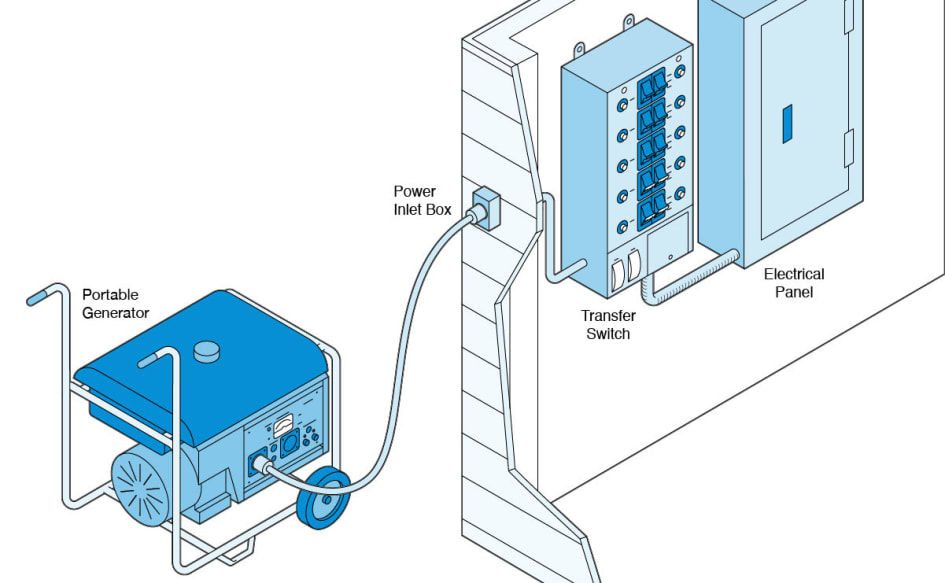
Illustration: Chris Philpot Illustration: Chris Philpot
Generator Brands
We test portable, inverter, home standby, and portable power station generators from brands like Briggs & Stratton and Ryobi in our labs.
Cat is a smaller manufacturer of gasoline-powered portable generators. It primarily focuses on the construction market, with generators designed for worksites.
Champion is a smaller manufacturer of all kinds of generators, ranging from portable generators to small gas-powered inverter models to large standby generators that can power an entire house using propane or natural gas.
DeWalt is best known as a tool brand, but it makes gas-powered portable generators and inverter generators with contractors in mind. Its products are sold primarily at Home Depot.
Echo is a smaller outdoor power equipment company that’s new to the generator market. Most of its models are midsized; many of them have low-carbon-monoxide engines.
Generac is one of the largest generator manufacturers in the U.S. It makes everything from portable generators to home standby generators, and its products are widely available, including at Home Depot and through smaller dealers.
Honda has a reputation for making stellar generators, particularly inverter models. Honda sells its relatively expensive portable and inverter generators through small dealerships and not at home centers.



























